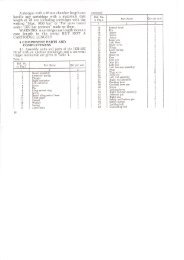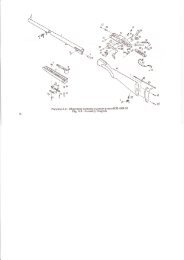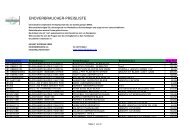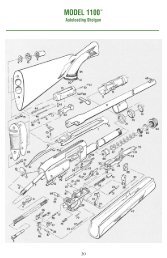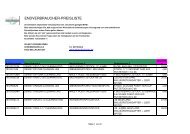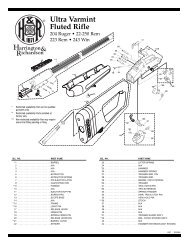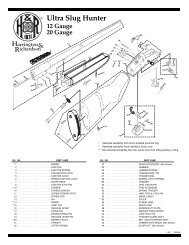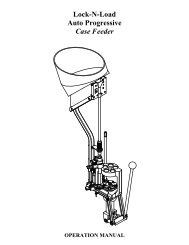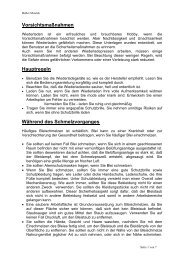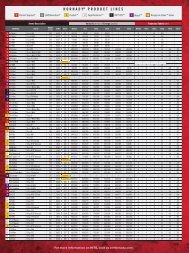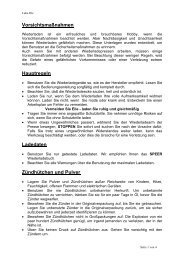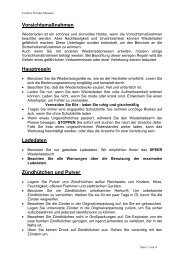HORNADY 366 AUTO OPERATION MANUAL - Hornady.com
HORNADY 366 AUTO OPERATION MANUAL - Hornady.com
HORNADY 366 AUTO OPERATION MANUAL - Hornady.com
You also want an ePaper? Increase the reach of your titles
YUMPU automatically turns print PDFs into web optimized ePapers that Google loves.
Step 8: STATION SEVEN (Crimp)<br />
Fig. 9: Crimp<br />
As you pull the handle (#37), the shell in Station Seven will enter the crimp die (#59). The<br />
shell will contact the inside of the die and raise the die body (#59) as it goes up. It will then<br />
contact the crimp plunger (#58) and the crimp will be closed. On the return stroke, the shell<br />
will be pulled from the crimp plunger (#58) but the crimp die (#59) will keep pressure on the<br />
case to retain the proper shape. Since different manufactures’ cases have varying types of<br />
construction, different settings are required for best results. The two-stage die enables the user<br />
to create a reloaded round that has approximately the same tapered mouth as a factory shell.<br />
There are two adjustments to the crimp die assembly (#57, #58, and #59); the larger outer<br />
position adjusts the die body (#59), the threaded bolt through the center of the die adjusts the<br />
crimp plunger (#58). To adjust the die, refer to the number of threads exposed above the large<br />
die body locking nut (#15) as reference points for each brand of case. For Winchester AA type<br />
shells, ten to ten and one half threads should remain above the locking ring (#15); for<br />
Remington Blue Magic and Federal Gold Metal Cases, eleven to thirteen threads should be<br />
exposed. These measurements are approximate and may need adjustment up or down,<br />
depending on the plastic and <strong>com</strong>ponents, but should be correct in most situations. Before<br />
adjusting the crimp the crimp die (#59), the crimp plunger (#58) should be raised a few turns<br />
by loosening lock nut (#15) and turning the crimp die bushing (#57) clock wise. Then, make<br />
the necessary die body (#59) adjustments, and follow by crimping the case. At this point, the<br />
case mouth will not be closed. Lower the crimp plunger (#58) in small increments, each time<br />
recrimping the shell until the final desired crimp depth is obtained. The crimp depth is up to<br />
you, but excessive depth shortens case life, while a crimp that is too shallow will not yield<br />
uniform velocity or good patterns. A good practice is to keep a factory round on hand for<br />
reference<br />
13



